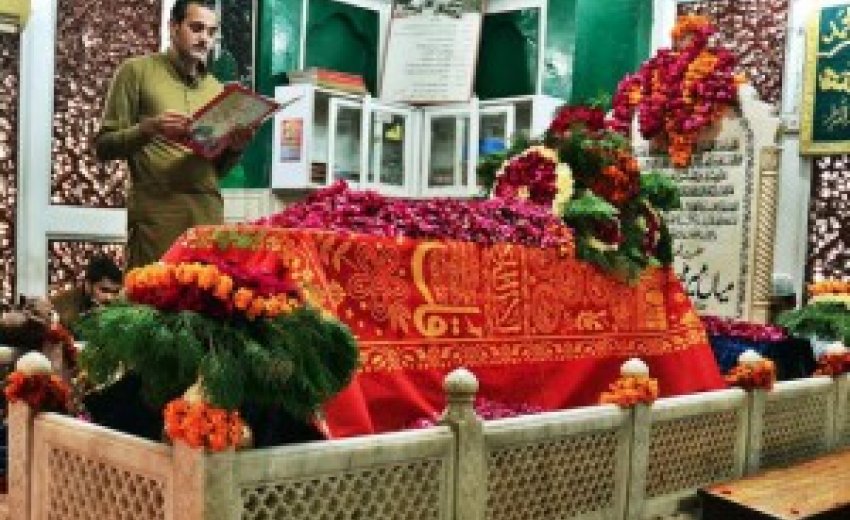On the invitation of Guru Arjan Dev, Muslim saint Mian Mir laid the foundation of the Golden Temple.
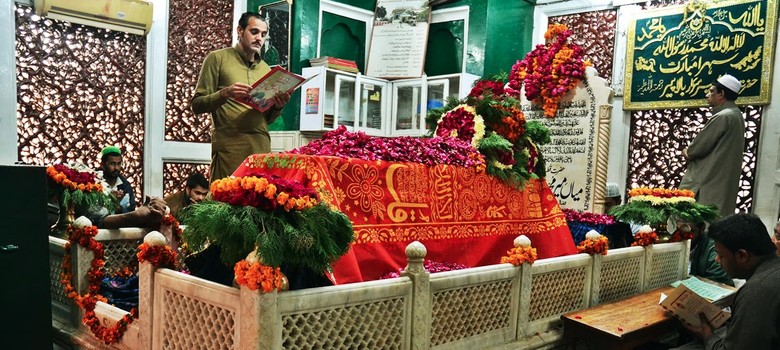
Feb 27, 2016: While traveling recently, I visited the shrine of renowned Sufi saint Hazrat Mian Mir of the Qadariyyah Sufi order in Lahore.
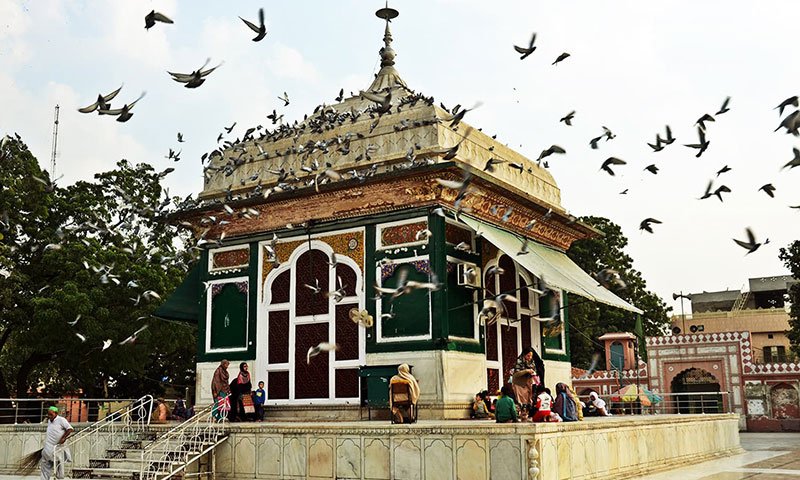 |
| Pigeons are attracted to the serenity of the shrine. Photo by Abdullah Khan. |
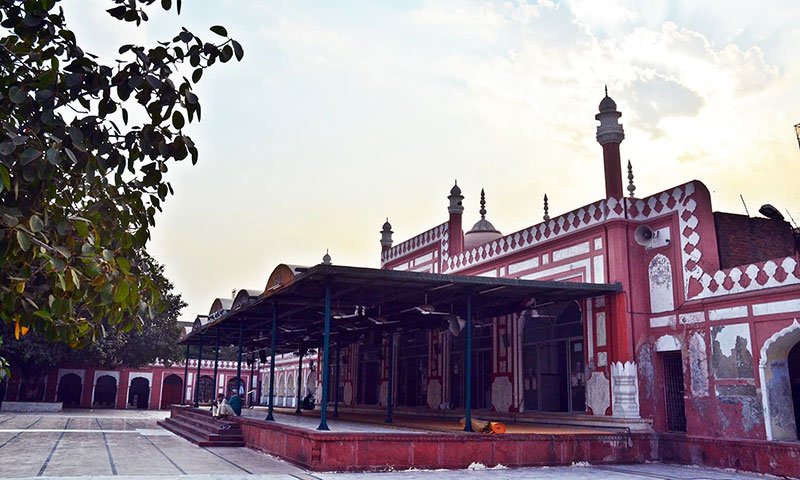 |
| The mosque attached to the shrine. Photo by Abdullah Khan. |
Mian Mir came to Lahore at the age of 28 and would spend the rest of his life there. He believed in the philosophy of the "unity of existence" and by the end of his life, had won the respect of people across classes and religions. He died in 1635.
The shrine of the saint is situated in “streets that follow like a tedious argument” , to quote the poet TS Eliot.
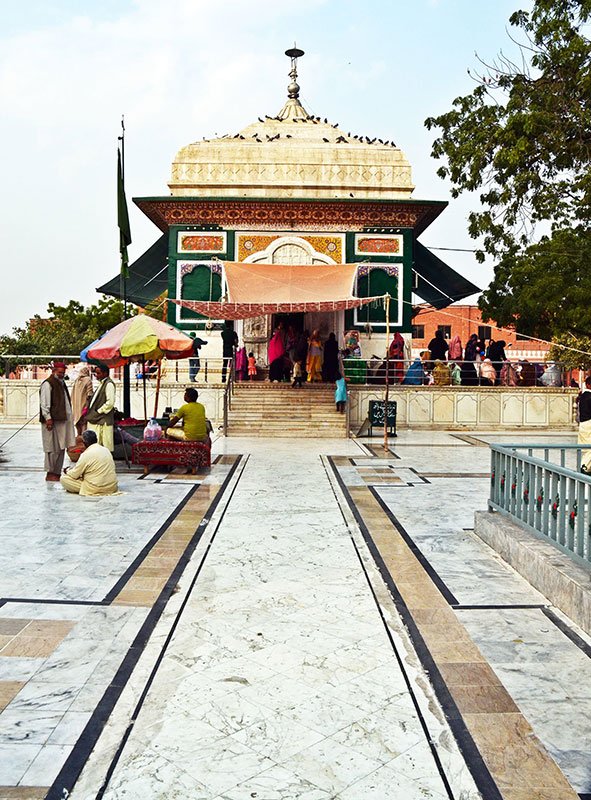 |
| A front view of the shrine. Photo by Abdullah Khan. |
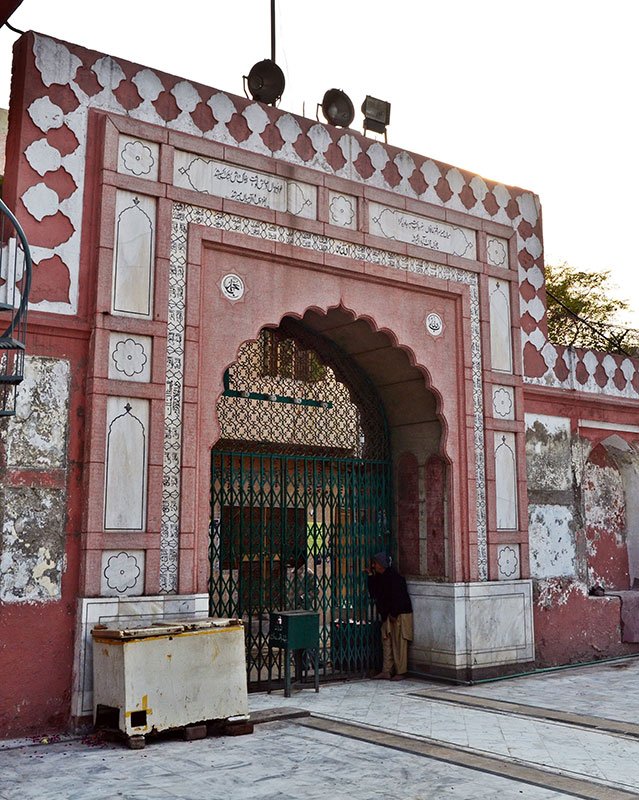 |
| Like a lot of Islamic architecture, the shrine's gate bears Persian inscriptions. — Photo by Abdullah Khan. |
Situated in the midst of a densely-populated area, the shrine is home to many poor people to whom it provides free shelter, and food on Thursdays.
“Thursday evening is considered to be a mubarak day for Sufis,” explained Ghulam Fareed, a Qawwal vocalist. Fareed, along with other Qawwals, are regular visitors at the shrine. He sings here because he feels the act gives him a sense of belonging.
“This shrine has given us an identity,” he said.
 |
| Devotees at the shrine. Photo by Abdullah Khan. |
Message of peace
Singing qawwalis here helps them make a living. After interacting with a few Qawwals, I realised that Qawwals don't sing for mere appreciation and money. They have a deep sense of purpose too.
To them, Sufi singing is a way to spread the message of unity and harmony, central to the Sufi thought. They take immense pride in it.
Here, every Thursday, Qawwals sing in the shrine's courtyard, while men and women clap and sway to the rhythm. Some men dance in ecstasy, some sing along, while others pay their tributes to the saint by prostrating themselves before his grave.
The air is infused with the scent of roses and locally-made incense. Salvers of sweets and other food items are distributed among the crowd inside and outside the shrine on these days.
There are certain food items specific to the Sufi shrines in Lahore – qatlaammay or desi pizza and doodh badam or milk with almonds – that are found the Mian Mir shrine too.
 |
| Vendors sell food near the shrine. Photo by Abdullah Khan. |
Vendors swarm the area outside the shrine where visitors tuck into dahi baray, chaat, sharbat and samosas.
Samosa vendor Akbar Shakir said he feels that he doesn’t belong in the posh areas of Lahore. He feels at home only in the streets near the shrine, he added.
Asked about the quality of the food here, Aleem Khan, a visitor retorted: “Quality is not ensured at these carts is it ensured at hotels?”
“After seeing what’s going on in expensive food chains that people dine in, I think we are better off over here,” he added, pointing to the samosa carts close by.
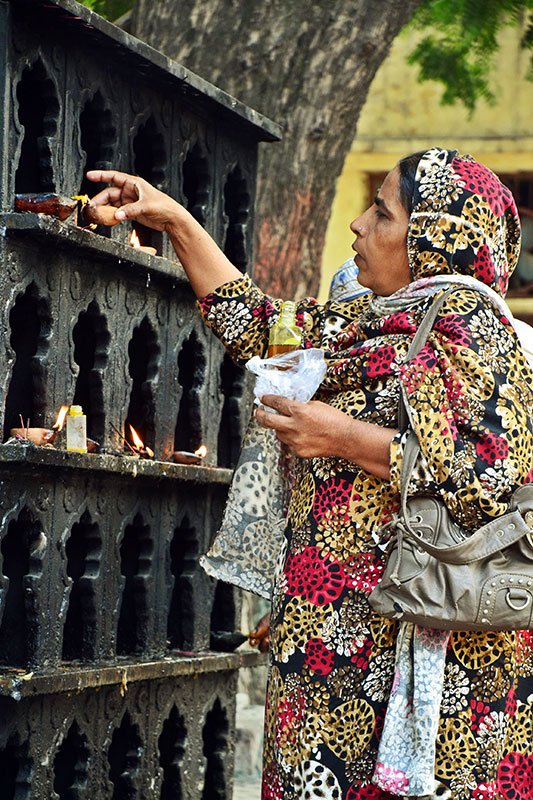 |
| A woman lights a diya, a ritual often seen at Sufi shrines in the Indian sub-continent. Photo by Abdullah Khan. |
Women comprise a large number of devotees here.
“I was sick for the last two years,” said a 32-year-old visitor, Sakeena. “I went to many doctors and hakeems but no one knew what my problem was. I took medicines but nothing worked. Then one day, my mother asked me to go to the shrine and pray. I am much better since then. I believe that Aulia (friends of God) have the power to make things work for you,” she added.
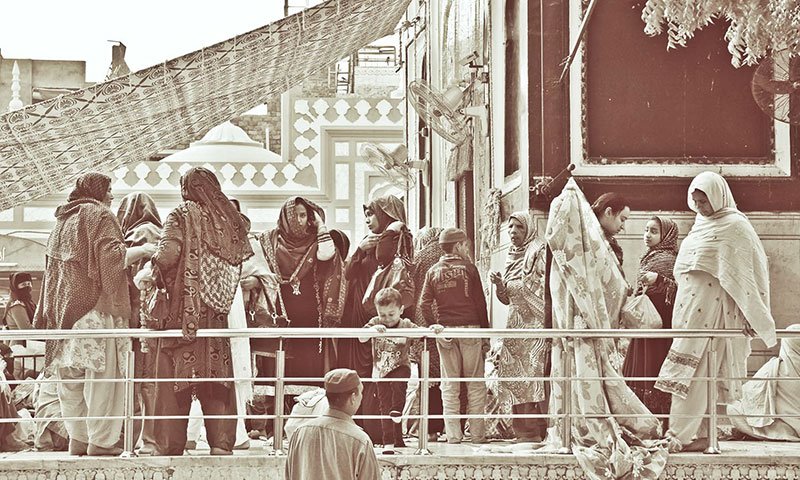 |
| Women at the shrine. Photo by Abdullah Khan. |
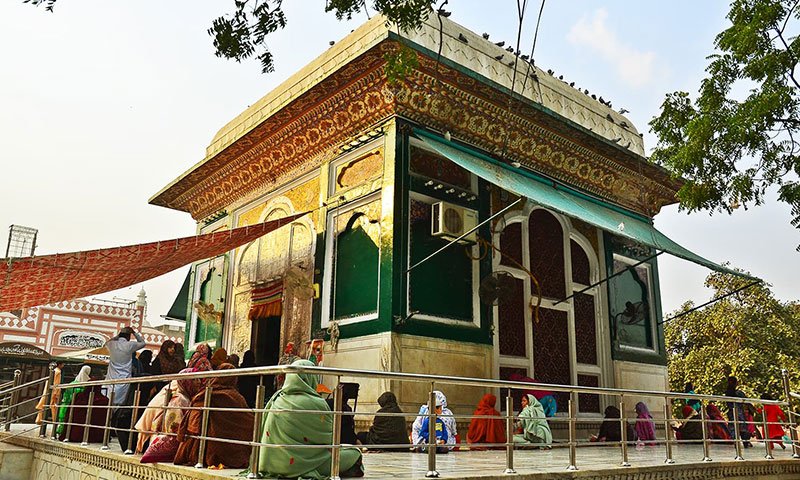 |
| People recite the Quran inside the shrine. Photo by Abdullah Khan. |
The Mughal connection
I learned that Mughal royals and nobility would often frequent the shrine of Mian Mir.
According to local and British historians, after Mian Mir died, Dara Shikoh, the son of Mughal Emperor Shah Jahan, gave orders for a mausoleum to be built. The prince, who strongly believed in social harmony, was inclined towards the mystical.
Shikoh authored several books on Sufism, as well as a treatise on the sacred Hindu text, the Bhagavad Gita. His book Sakinatul Aulia is dedicated to the life and works of Mian Mir.
Shikoh’s intellectual pursuits made him strive for a culture in the subcontinent that allowed people of different ethnic or religious backgrounds to live in harmony together. This was as badly needed in the 17th century as it is now.
Many modern-day historians believe that Shikoh, the philosopher prince, was the actual bearer of the legacy of Emperor Akbar whose belief in Sulh-e-Kul or "Peace with all" was similar to that of the Sufis. But that was not to be. He was killed by his younger brother Aurangzeb, a religious conservative, who imprisoned their father and ascended the Mughal throne.
Sufi-Sikh influence
On my most recent visit to the shrine, I saw many Sikh pilgrims. Though many of them were from Pakistan, some had come from India. Sikh pilgrims usually visit the shrine during the birthday celebrations of Guru Nanak too.
I was curious to know what brought Sikhs to a Muslim saint's shrine, so I asked a few of them.
 |
| Mian Mir’s grave is covered with flowers while people recite the Quran. Photo by Abdullah Khan. |
“To us, Mian Mir sahib is as divine as the saints of Sikhism,” said Diljeet, who was visiting from Ferozepur in Punjab, India.
Sufis and gurus and the messages they brought transcend geographical and cultural boundaries, said Gursavek, another devotee. “They are beacons of light,” he added.
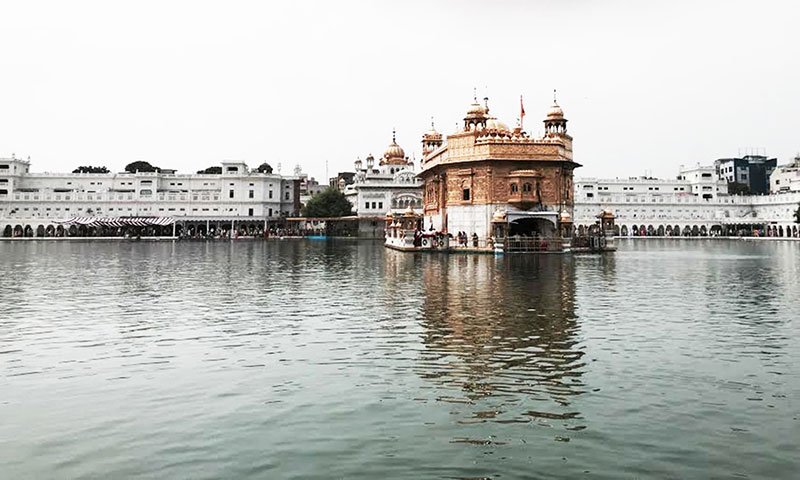 |
| The Harmandir Sahib popularly known as the Golden Temple in Amritsar. Photo by Fatema Imani. |
Friends across religions
Mian Mir was an icon of unity, tolerance and love during and after his life.
According to Sufi as well as Sikh traditions, the Muslim saint laid the foundation of the Harmandir Sahib, also known as the Golden Temple.
Mian Mir is said to have travelled from Lahore to Amritsar on the invitation of the fifth Sikh guru, Arjan Dev.
The story goes that Guru Arjan Dev and Mian Mir revered each other. Both were divine figures who not only shared a mutual respect for each other but a deep respect for humanity.
The goal of human life, according to the Sufis, is to realise the divinity within irrespective of caste, creed and religion. Harmandir Sahib, in this sense, is more of a cultural hub for the people of Punjab. It is a place where self-actualisation is promoted. It is also marked as a gurudwar - literally meaning lord’s door or the door of the guru.
The Guru Granth Sahib, the holy book of the Sikh faith, includes the kalaam or works of renowned Sufis like Baba Fareed of the Chishtiyyah Sufi order.
Almost as a reminder of the ties between the two faiths, the kalaam of popular Sikh poet Ravidas resounds at the Mian Mir shrine today. The message is one of humanity and tolerance.
In an era of chaos and war, places that are living monuments to religious harmony always manage to leave the heart at peace, if only for a little while.
This article was first published on Dawn.

